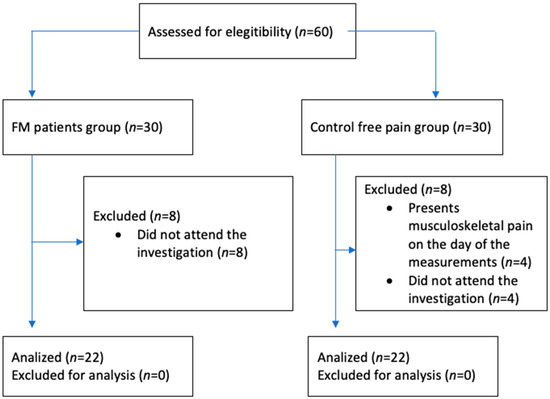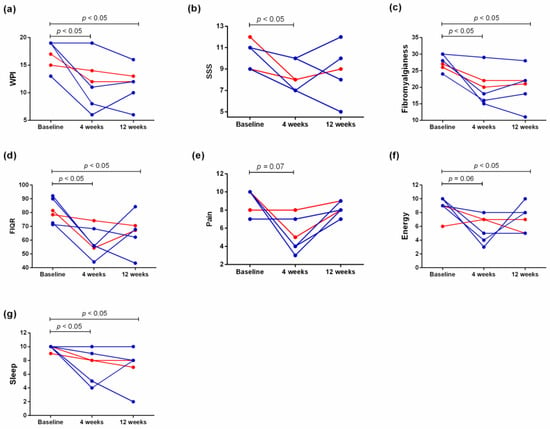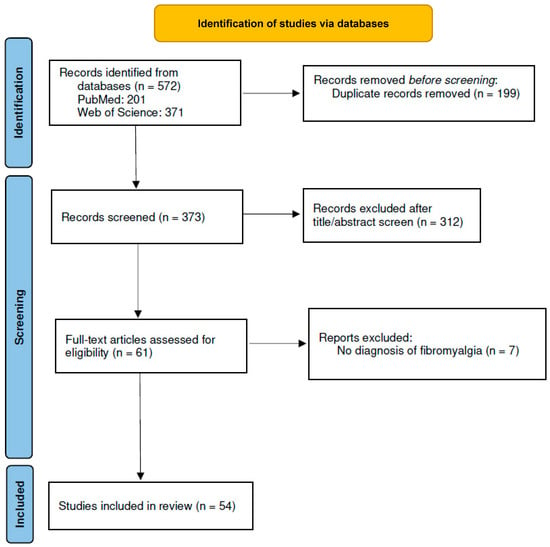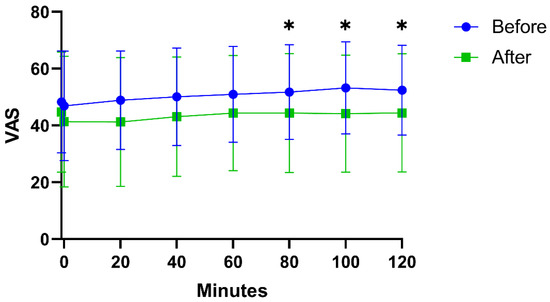Neurogenic Neuroinflammation in Fibromyalgia
Share This Topical Collection
Editors
Topical Collection Information
Dear Colleagues,
Chronic pain, fatigue, and depression, all of which are primary fibromyalgia symptoms, have been linked to neuroinflammation in certain regions of the central nervous system. Peripheral and central effects, such as neurogenic neuroinflammation, are also important contributors to the clinical features of each of these disorders. Investigation of the role of neurogenic neuroinflammation in fibromyalgia might contribute to improved understanding of the fundamental mechanisms leading to these enigmatic disorders, as well as to the identification of new therapeutic targets. A major neuroinflammation symptom that has been discovered through research is neurodegeneration. Conditions associated with neuroinflammation include Alzheimer's disease and Parkinson’s disease.
This collection focuses on the different degrees to which neurogenic neuroinflammation might contribute to the multifactorial pathogenesis of fibromyalgia. Reviews and research articles that discusses novel therapeutic targets and molecular mechanisms involved between the two disorders are welcome.
Dr. Rosanna Di Paola
Dr. Roberta Fusco
Collection Editors
Manuscript Submission Information
Manuscripts should be submitted online at www.mdpi.com by registering and logging in to this website. Once you are registered, click here to go to the submission form. Manuscripts can be submitted until the deadline. All submissions that pass pre-check are peer-reviewed. Accepted papers will be published continuously in the journal (as soon as accepted) and will be listed together on the collection website. Research articles, review articles as well as short communications are invited. For planned papers, a title and short abstract (about 100 words) can be sent to the Editorial Office for announcement on this website.
Submitted manuscripts should not have been published previously, nor be under consideration for publication elsewhere (except conference proceedings papers). All manuscripts are thoroughly refereed through a single-blind peer-review process. A guide for authors and other relevant information for submission of manuscripts is available on the Instructions for Authors page. Biomedicines is an international peer-reviewed open access monthly journal published by MDPI.
Please visit the Instructions for Authors page before submitting a manuscript.
The Article Processing Charge (APC) for publication in this open access journal is 2600 CHF (Swiss Francs).
Submitted papers should be well formatted and use good English. Authors may use MDPI's
English editing service prior to publication or during author revisions.
Keywords
- neuroinflammation
- neurodegeneration
- fibromyalgia
- inflammation
- pain
Published Papers (6 papers)
Open AccessArticle
Correlation between Different Psychological Variables in Women with Fibromyalgia with Symptoms of Neurogenic Inflammation: A Cross-Sectional Study
by
Víctor Riquelme-Aguado, Alazne Zabarte-del Campo, Guillermo Baviano-Klett, Josué Fernández-Carnero, Antonio Gil-Crujera and Francisco Gómez-Esquer
Viewed by 617
Abstract
Fibromyalgia (FM) is a chronic pain syndrome hypothesized to arise from a state of neurogenic inflammation. Mechanisms responsible for pain, as well as psychological variables, are typically altered in this condition. The main objective of this research was to explore somatosensory and psychological
[...] Read more.
Fibromyalgia (FM) is a chronic pain syndrome hypothesized to arise from a state of neurogenic inflammation. Mechanisms responsible for pain, as well as psychological variables, are typically altered in this condition. The main objective of this research was to explore somatosensory and psychological alterations in women with FM. The secondary objective was to carry out a secondary analysis to correlate the different variables studied and delve into the influences between them. The relationship between different psychological variables in fibromyalgia is not clear in the previous scientific literature. Forty-four individuals participated, of which twenty-two were controls and twenty-two were women with fibromyalgia. The main outcome measures were the Numeric Pain Rating Scale, Fibromyalgia Impact Questionnaire, pressure pain threshold, conditioned pain modulation, anxiety and depression symptoms, catastrophizing and kinesiophobia cognitions. The main analysis showed that there is a moderate correlation between the psychological variables of depression and fear of movement and the ability to modulate pain. There is also a moderately inverse correlation between pain catastrophizing cognitions and pain intensity/disability. Multiple moderate and strong correlations were found among the various psychological variables studied. FM patients exhibit somatosensory alterations alongside negative psychological symptoms that influence the experience of pain, and they may perpetuate the state of neurogenic inflammation.
Full article
►▼
Show Figures
Open AccessArticle
Vasodilatory Peripheral Response and Pain Levels following Radiofrequency Stressor Application in Women with Fibromyalgia
by
Antonio Casas-Barragán, Alba Muñoz-Revilla, Rosa María Tapia-Haro, Francisco Molina, María Correa-Rodríguez and María Encarnación Aguilar-Ferrándiz
Viewed by 785
Abstract
Fibromyalgia (FM) is a syndrome of unknown pathogenesis that presents, among other symptoms, chronic widespread musculoskeletal pain. This study aims to analyze the effects of radiofrequency on core body temperature and the peripheral temperature of the dorsal surfaces and palms of the hands
[...] Read more.
Fibromyalgia (FM) is a syndrome of unknown pathogenesis that presents, among other symptoms, chronic widespread musculoskeletal pain. This study aims to analyze the effects of radiofrequency on core body temperature and the peripheral temperature of the dorsal surfaces and palms of the hands and its association with pain levels in patients with FM. A case-control observational study was conducted with a total of twenty-nine women diagnosed with FM and seventeen healthy women. Capacitive monopolar radiofrequency was applied to the palms of the hands using the Biotronic Advance Develops device. Peripheral hand temperature was analyzed using a thermographic camera, and core body temperature was analyzed with an infrared scanner. Pressure pain thresholds (PPTs) and electrical pain were recorded with an algometer and a Pain Matcher device, respectively. A significant decrease was observed in women with FM in pain electrical threshold (95% CI [0.01–3.56], p = 0.049), electrical pain (95% CI [2.87–10.43],
p = 0.002), dominant supraspinatus PPT (95% CI [0.04–0.52],
p = 0.023), non-dominant supraspinatus PPT (95% CI [0.03–0.60],
p = 0.029), and non-dominant tibial PPT (95% CI [0.05–0.89],
p = 0.031). Women with FM have increased hypersensitivity to pain as well as increased peripheral temperature after exposure to a thermal stimulus, such as radiofrequency, which could indicate disorders of their neurovascular response.
Full article
►▼
Show Figures
Open AccessCase Report
Subcutaneous Tocilizumab May Be Effective in Refractory Fibromyalgia Patients
by
Kuo-Tung Tang, Tsai-Ling Liao, Yi-Hsing Chen, Der-Yuan Chen and Kou-Lung Lai
Viewed by 1602
Abstract
Introduction: Fibromyalgia (FM) is a chronic disorder characterized by widespread pain with an enormous symptom burden. Its treatment efficacy is limited. Its pathogenesis involves immune dysregulation, which includes interleukin-6 (IL-6) production. Methods: We herein reported a case series of FM patients receiving subcutaneous
[...] Read more.
Introduction: Fibromyalgia (FM) is a chronic disorder characterized by widespread pain with an enormous symptom burden. Its treatment efficacy is limited. Its pathogenesis involves immune dysregulation, which includes interleukin-6 (IL-6) production. Methods: We herein reported a case series of FM patients receiving subcutaneous tocilizumab at our institution. FM symptoms were evaluated by the revised Fibromyalgia Impact Questionnaire (FIQR), which included pain level, and the fibromyalgianess scale based on the 2016 criteria of the American College of Rheumatology (ACR). FM symptoms were compared using the Wilcoxon signed-rank test. Neutrophils from primary FM patients and matched healthy controls were also isolated for transcriptome analysis. Results: We presented a total of two primary and four secondary FM patients who had received subcutaneous tocilizumab for a minimum of 12 weeks. All patients had severe symptoms despite standard treatments. Patients’ FIQR and fibromyalgianess both dropped at 4 and 12 weeks. Four (67%) of them reached a pain reduction of ≥30% at 4 weeks, and three (50%) reached a pain reduction of ≥30% at 12 weeks. Possible differentially expressed genes were identified in primary FM patients when compared with controls and after tocilizumab treatment. Conclusions: FM patients likely benefited from subcutaneous tocilizumab therapy. A randomized controlled trial is needed to verify its efficacy.
Full article
►▼
Show Figures
Open AccessSystematic Review
Non-Invasive Electric and Magnetic Brain Stimulation for the Treatment of Fibromyalgia
by
Andrés Molero-Chamizo, Michael A. Nitsche, Rafael Tomás Andújar Barroso, José R. Alameda Bailén, Jesús Carlos García Palomeque and Guadalupe Nathzidy Rivera-Urbina
Viewed by 2021
Abstract
Although fibromyalgia is defined by its core muscular nociceptive component, it also includes multiple dysfunctions that involve the musculoskeletal, gastrointestinal, immune, endocrine, as well as the central and peripheral nervous systems, amongst others. The pathogenic involvement of the nervous system and the numerous
[...] Read more.
Although fibromyalgia is defined by its core muscular nociceptive component, it also includes multiple dysfunctions that involve the musculoskeletal, gastrointestinal, immune, endocrine, as well as the central and peripheral nervous systems, amongst others. The pathogenic involvement of the nervous system and the numerous neurological and neuroinflammatory symptoms of this disease may benefit from neuromodulatory stimulation techniques that have been shown to be effective and safe in diverse nervous system pathologies. In this systematic review, we outline current evidence showing the potential of non-invasive brain stimulation techniques, such as therapeutic strategies in fibromyalgia. In addition, we evaluate the contribution of these tools to the exploration of the neurophysiological characteristics of fibromyalgia. Considering that the pathogenesis of this disease is unknown, these approaches do not aim to causally treat this syndrome, but to significantly reduce a range of key symptoms and thus improve the quality of life of the patients.
Full article
►▼
Show Figures
Open AccessArticle
Analysis of the Influence of IL-6 and the Activation of the Jak/Stat3 Pathway in Fibromyalgia
by
Ylenia Marino, Alessia Arangia, Marika Cordaro, Rosalba Siracusa, Ramona D’Amico, Daniela Impellizzeri, Rosalia Cupi, Alessio Filippo Peritore, Enrico Gugliandolo, Roberta Fusco, Salvatore Cuzzocrea and Rosanna Di Paola
Viewed by 1677
Abstract
Background: Fibromyalgia is a medical condition that affects a small percentage of the population, with no known effective treatment. There is evidence to suggest that inflammation is a key factor in the nerve sensitization that characterizes the disorder. Therefore, this paper concentrates on
[...] Read more.
Background: Fibromyalgia is a medical condition that affects a small percentage of the population, with no known effective treatment. There is evidence to suggest that inflammation is a key factor in the nerve sensitization that characterizes the disorder. Therefore, this paper concentrates on the role of IL-6 in fibromyalgia and the related pain-like symptoms. Methods: This work aimed to evaluate Sprague–Dawley rats, which were injected for three consecutive days with 1 mg/kg of reserpine; IL-6-R Ab was intraperitoneally injected at 1.5 mg/kg seven days after the first reserpine injection. Behavioral analyses were conducted at the beginning of the experiment and at seven and twenty-one days from the first reserpine injection. At this timepoint, the animals were sacrificed, and tissues were collected for molecular and histological analysis. Results: Our data showed the analgesic effect of IL-6-R-Ab administration on mechanical allodynia and thermal hyperalgesia. Additionally, the reserpine + IL-6-R-Ab group showed a reduced expression of the pain-related mediators cFOS and NFG and reduced levels of pro-inflammatory cytokines (TNF-α, IL-1β and IL-6) and chemokines (Cxcl5, Cxcl10 and Cx3cl1). From the molecular point of view, the IL-6-R-Ab administration reduced the gp130 phosphorylation and the activation of the Jak/STAT3 pathway. Additionally, the IL-6-R Ab reduced the activation of neuroinflammatory cells. Conclusions: Our study showed that IL-6 plays a crucial role in fibromyalgia by triggering the Jak/STAT3 pathway, leading to an increase in chemokine levels and activating glial cells.
Full article
►▼
Show Figures
Open AccessArticle
The Vastus Lateralis Muscle Interstitium Proteome Changes after an Acute Nociception in Patients with Fibromyalgia Compared to Healthy Subjects—A Microdialysis Study
by
Bijar Ghafouri, Daria Matikhan, Nikolaos Christidis, Malin Ernberg, Eva Kosek, Kaisa Mannerkorpi, Björn Gerdle and Karin Wåhlén
Viewed by 1806
Abstract
Fibromyalgia (FM) is a complex disorder and a clinical challenge to diagnose and treat. Microdialysis is a valuable tool that has been used to investigate the interstitial proteins and metabolites of muscle in patients with fibromyalgia. The implantation of the catheter in the
[...] Read more.
Fibromyalgia (FM) is a complex disorder and a clinical challenge to diagnose and treat. Microdialysis is a valuable tool that has been used to investigate the interstitial proteins and metabolites of muscle in patients with fibromyalgia. The implantation of the catheter in the muscle causes acute tissue trauma and nociception. The aim of this study was to investigate acute proteome changes in the vastus lateralis muscle in women fibromyalgia patients (FM) and healthy subjects (CON). A further aim was to study if a 15-week resistance exercise program in FM had any influence on how chronic painful muscle responds to acute nociception. Twenty-six women patients with FM and twenty-eight CON were included in this study. A microdialysis catheter (100 kilo Dalton cut off, membrane 30 mm) was inserted in the vastus lateralis muscle, and samples were collected every 20 min. Subjects rated pain before catheter insertion, directly after, and every 20 min of sample collection. Dialysate samples from time points 0–120 were pooled and considered trauma samples due to the catheter insertion. The samples were analyzed with nano-liquid chromatography-tandem mass spectrometry (nLC-MS/MS). Advanced multivariate data analysis was used to investigate protein profile changes between the groups. Multivariate data analysis showed significant (CV-ANOVA
p = 0.036) discrimination between FM and CON based on changes in 26 proteins. After the 15-week exercise intervention, the expression levels of the 15 proteins involved in muscle contraction, response to stimulus, stress, and immune system were increased to the same expression levels as in CON. In conclusion, this study shows that microdialysis, in combination with proteomics, can provide new insights into the interstitial proteome in the muscle of FM. In response to acute nociception, exercise may alter the innate reactivity in FM. Exercise may also modulate peripheral muscle proteins related to muscle contraction, stress, and immune response in patients with FM.
Full article
►▼
Show Figures
Planned Papers
The below list represents only planned manuscripts. Some of these
manuscripts have not been received by the Editorial Office yet. Papers
submitted to MDPI journals are subject to peer-review.
- neuroinflammation
- neurodegeneration
- fibromyalgia
- inflammation
- pain













